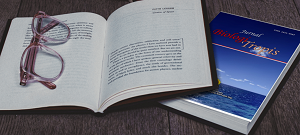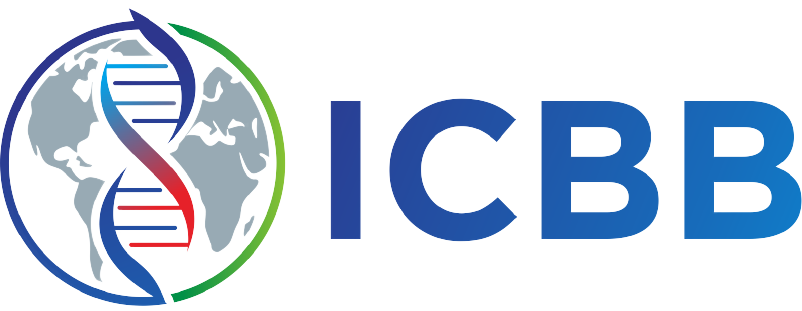The Effect of Natural Feed Density Variation During Immersion on The Growth of Pearl Oyster (Pinctada maxima) Spat in Laboratory Conditions
Authors
Sevia Miranti , Alia Mukhlis , Abdul SyukurDOI:
10.29303/jbt.v25i3.9853Published:
2025-07-29Issue:
Vol. 25 No. 3 (2025): Juli-SeptemberKeywords:
Pearl Oysters; Soaking ; Chaetoceros amami.Articles
Downloads
How to Cite
Downloads
Metrics
Abstract
Pearl oysters (Pinctada maxima) are fishery commodities with high economic value and are widely cultivated. The challenge in pearl oyster cultivation is the imbalance between nutritional needs and natural feed availability, which has the potential to inhibit growth, increase mortality risk, and reduce the quality of produced spat. This research aims to identify the optimal natural feed density to enhance cultivation success and reduce mortality rates during the critical phase. This research was conducted from February to August 2025 at the laboratory of PT. Mutiara Surya Indonesia, Sugian Village, Sembelia District, East Lombok Regency. The experimental research method used a completely randomized design (CRD) consisting of 5 treatments with 3 replications. Data collection was performed on day 0, day 10, day 20, and day 30. The research results showed growth for each immersion with density variations: treatment A (control, without immersion) showed growth reaching 0.30 mm, treatment B grew approximately 0.32 mm, treatment C grew approximately 0.35 mm, treatment D grew approximately 0.41 mm, and treatment E grew approximately 0.55 mm. The difference in pearl oyster spat size (0.12 mm) significantly affected the density variation differences, which significantly influenced (p>0.05) absolute growth, relative growth, and daily specific growth on days 10, 20, and 30. However, it did not significantly affect (p>0.05) survival rates. The values of absolute growth, relative growth, and daily specific growth showed that treatment E was the best.
References
Auliyah, A. N., Mukhlis, A., & Asri, Y. (2023). Pertumbuhan dan Tingkat Kelangsungan Hidup Spat Kerang Mutiara (Pinctada maxima) Dengan Kombinasi Fitoplankton Chaetoceros amami dan Nitzschia sp. Journal of Fish Nutrition, 3(1), 147-152. https://doi.org/10.29303/jfn.v3i1.5254
Barille, L., Prou, J., Héral, M., & Razet, D. (2000). Effects of high natural seston concentrations on the feeding, selection, and absorption of the oyster Crassostrea gigas (Thunberg). Journal of Experimental Marine Biology and Ecology, 212(2), 149-172. https://doi.org/10.1016/S0022-0981(96)02756-6
Baso, H. S., & Syarifuddin, M. (2021). Analisis Pertumbuhan Kerang Mutiara (Pinctada maxima) Berdasarkan Kedalaman di Perairan Kupa, Kabupaten Barru. Fisheries of Wallacea Journal, 2(1), 34-44. https://doi.org/10.55113/fwj.v2i1.666
Bayne, B.L. (2017). Biology of Oysters. Academic Press, London. 680 pp. https://books.google.com/books?hl=id&lr=&id=jZbBCQAAQBAJ&oi=fnd&pg=PP1&dq=Biology+of+Oysters.+Academic+Press,+London.+680+pp.&ots=TmalScDmLz&sig=peiJWACVKbVY2iq3IHNWU-Yx8f8
Bayne, B.L., & Newell, R.C. (1983). Physiological energetics of marine molluscs. In: The Mollusca (Vol. 4, pp. 407-515). Academic Press, New York.https://doi.org/10.1016/B978-0-12-751404-8.50017-7Get rights and content
Dewi, D. K., Santoso, P., & Dahoklory, N. (2023). Karakteristik Pertumbuhan Chaetoceros sp Berdasarkan Intensitas Cahaya yang Berbeda. Jurnal Vokasi Ilmu-Ilmu Perikanan (JVIP), 3(2), 96-100.DOI: http://dx.doi.org/10.35726/jvip.v3i2.6896
Hendrawati, G. I., & Firmani, U. (2024). Pertumbuhan Tiram Mutiara (Pinctada maxima) Menggunakan Metode Karambah Apung dan longline: Pearl oyster (Pinctada maxima) Growth Using Floating Cage and Longline Methods. Jurnal Ilmu dan Teknologi Perikanan Tangkap, 9(2), 69-73.https://doi.org/10.35800/jitpt.9.2.2024.57298
Erwandani, E., Sumahiradewi, L. G., Astuti, N. K. P., & Nufus, C. (2024). Pengaruh Perbedaan Warna Cahaya Lampu Terhadap Pertumbuhan Nanocloropsis sp. Al-Qalbun:Jurnal Pendidikan, Sosial dan Sains,2(2), 89-95. https://doi.org/10.59896/qalbu.v2i2.114
Fajry, S., Setyowati, N., & Mukhlis, A. (2022). The Effect of The Soaking Period in Natural Feed of Chaetocerso sp. On The Growth and Viability of Pearl Class (Pincatad maxima) Seeds. Journal of Fish Health,2(2), 97-108. https://doi.org/10.29303/jfh.v2i2.1473
Huki, T., Santoso, P., & Tjendanawangi, A. (2023). Pertumbuhan dan Kelangsungan Hidup Larva Kerang Mutiara yang Diberi Pakan Chaetoceros sp dengan Dosis yang Berbeda. Jurnal Vokasi Ilmu-Ilmu Perikanan (Jvip), 4(1), 112–117.DOI: http://dx.doi.org/10.35726/jvip.v4i1.7128
Istiqomah, S. N., Mukhlis, A., & Mulyani, L. F. (2024). Effects of Stocking Density on Growth and Survival of Pearl Oyster Spat (Pinctada maxima) in Laboratory Rearing. Jurnal Biologi Tropis, 24(2), 548-555. DOI: http://dx.doi.org/10.29303/jbt.v24i2.6853
Knauer, J., & Southgate, P. C. (1999). A review of the nutritional requirements of bivalves and the development of alternative and artificial diets for bivalve aquaculture. Reviews in Fisheries Science, 7(3-4), 241-280.https://doi.org/10.1080/10641269908951362
Kotta, R. (2017). Pertumbuhan dan Perkembangan Spat Tiram Mutiara (Pinctada maxima) di Perairan Ternate Selatan Pulau Ternate. Prosiding Seminar Nasional KSP2K, 1(2), 158–166. http://download.garuda.kemdikbud.go.id/article.php?article=803567&val=13108&title=PERTUMBUHAN%20DAN%20PERKEMBANGAN%20SPAT%20TIRAM%20MUTIARA%20Pinctada%20maxima%20DI%20PERAIRAN%20TERNATE%20SELATAN%20PULAU%20TERNATE
Mukhlis, A., Ilmi, N. K., Rahmatullah, S., Ilyas, A. P., & Dermawan, A. (2021). Percepatan Pertumbuhan Benih Kerang Mutiara (Pinctada maxima) Menggunakan Metoda Perendaman dalam Bak Pakan Alami. Jurnal Perikanan, 11(1), 1–12. DOI: 10.29303/jp.v11i1.224
Oktaviani, T., Cokrowati, N., & Astriana, B. H. (2018). Tingkat Kelangsungan Hidup Spat Kerang Mutiara (Pinctada maxima) dengan Kepadatan yang Berbeda di Balai Perikanan Budidaya Laut (BPBL) Lombok. Jurnal Kelautan: Indonesian Journal of Marine Science and Technology, 11(1), 47-55. https://journal.trunojoyo.ac.id/jurnalkelautan/article/view/3136
Prasetyo, L. D., Supriyantini, E., & Sedjati, S. (2022). Pertumbuhan Mikroalga Chaetoceros calcitrans pada Kultivasi Dengan Intensitas Cahaya Berbeda. Buletin Oseanografi Marina, 11(1), 59-70. DOI:10.14710/buloma.v11i1.31698
Putra, I. G. B. A. W., Anggreni, A. A. M. D., & Gunam, I. B. W. (2017). Pengaruh Penambahan Feri Klorida pada Media NPSi Terhadap Biomassa dan Kandungan Protein Mikroalga Chaetoceros calcitrans. Jurnal Rekayasa dan Manajemen Agroindustri, 5(1), 31-39. http://download.garuda.kemdikbud.go.id/article.php?article=1544753&val=947&title=Pengaruh%20Penambahan%20Feri%20Klorida%20pada%20Media%20NPSi%20terhadap%20Biomassa%20dan%20Kandungan%20Protein%20Mikroalga%20Chaetoceros%20calcitrans
Ramadhanty, N. S., Maulana, I. T., & Alhakimi, T. A. (2020). Kultur Chaetoceros calcitrans Serta Potensinya Sebagai Antibakteri Staphylococcus aureus. Prosiding Farmasi, 6(2), 177-184.http://dx.doi.org/10.29313/.v6i2.22667
Rizaki, I., Hariyadi, S., & Arifin, T. (2021). Karakteristik Lingkungan Perairan dan Kesesuaian Budidaya Tiram Mutiara (Pinctada maxima) di Kabupaten Barru. Coastal and Ocean Journal (COJ), 5(1), 37-53. DOI: https://doi.org/10.29244/COJ.5.1.37-53
Septiani, N., Amir, S., & Mukhlis, A. (2023). The Effect of The Interval Time Immersion in The Natural Feed Tank of Chaetoceros simplex on Growth and Survival Rate of Pearl Oyster (Pinctada maxima). Journal of Fish Health, 3(1), 1-10. https://doi.org/10.29303/jfh.v3i1.2117
Sopian, T., Junaidi, M., & Azhar, F. (2019). Laju Pertumbuhan Chaetoceros sp. pada Pemeliharaan dengan Pengaruh Warna Cahaya Lampu yang Berbeda. Jurnal Kelautan (Indonesian Journal of Marine Science and Technology), 12(1), 36. https://doi.org/10.21107/jk.v12i1.4873
Taufiq, N., Rachmawati, D., Cullen, J., & Yuwono, Y. (2010). Aplikasi Isochrysis galbana dan Chaetoceros amami Serta Kombinasinya Terhadap Pertumbuhan dan Kelulushidupan Veliger-Spat Tiram Mutiara (Pinctada maxima). Ilmu Kelautan: Indonesian Journal of Marine Sciences, 15(3), 119-125. DOI: https://doi.org/10.14710/ik.ijms.15.3.119-125
Tomatala, P. (2014). Efektifitas Penggunaan Bingkai Jaring pada Penjarangan Benih Kerang Mutiara (Pinctada maxima). E-Journal Budidaya Perairan, 2(1), 1–6. https://doi.org/10.35800/bdp.2.1.2014.3786
Utami, D. P., Saputra, A., & Rahman, M. (2023). Sistem Kendali dan Pemantau Kualitas Air Tambak Udang Berbasis Salinitas, Suhu, dan pH Air. Jurnal Komputer, Informasi Teknologi, dan Elektro, 8(2), 45-52. https://scholar.google.com/scholar?cites=13871012195648514168&as_sdt=2005&sciodt=0,5&hl=id&scioq=Sistem+Kendali+dan+Pemantau+Kualitas+Air+Tambak+Udang+Berbasis+Salinitas,+Suhu,+dan+pH+Air.+Jurnal+Komputer,+Informasi+Teknologi,+dan+Elektro,+8(2),+45-52.
Winanto, T. (2004). Memproduksi Benih Tiram Mutiara P.T. Panebar Swadaya, Jakarta. Seri Agribisnis. 95 hal.
Wulandari, D. Y., Pratiwi, N. T. M., & Adiwilaga, E. M. (2014). Distribusi Spasial Fitoplankton di Perairan Pesisir Tangerang. Jurnal Ilmu Pertanian Indonesia, 19(3), 156-162. https://journal.ipb.ac.id/index.php/JIPI/article/view/9150
Yukihira, H., Klumpp, D. W., & Lucas, J. S. (1998). Effects of body size on suspension feeding and energy budgets of the pearl oysters Pinctada margaritifera and P. maxima. Marine Ecology Progress Series, 170, 119-130. https://doi.org/10.3354/meps170119
License
Copyright (c) 2025 Sevia Miranti, Alia Mukhlis, Abdul Syukur

This work is licensed under a Creative Commons Attribution 4.0 International License.

Jurnal Biologi Tropis is licensed under a Creative Commons Attribution 4.0 International License.
The copyright of the received article shall be assigned to the author as the owner of the paper. The intended copyright includes the right to publish the article in various forms (including reprints). The journal maintains the publishing rights to the published articles.
Authors are permitted to disseminate published articles by sharing the link/DOI of the article at the journal. Authors are allowed to use their articles for any legal purposes deemed necessary without written permission from the journal with an acknowledgment of initial publication to this journal.


























